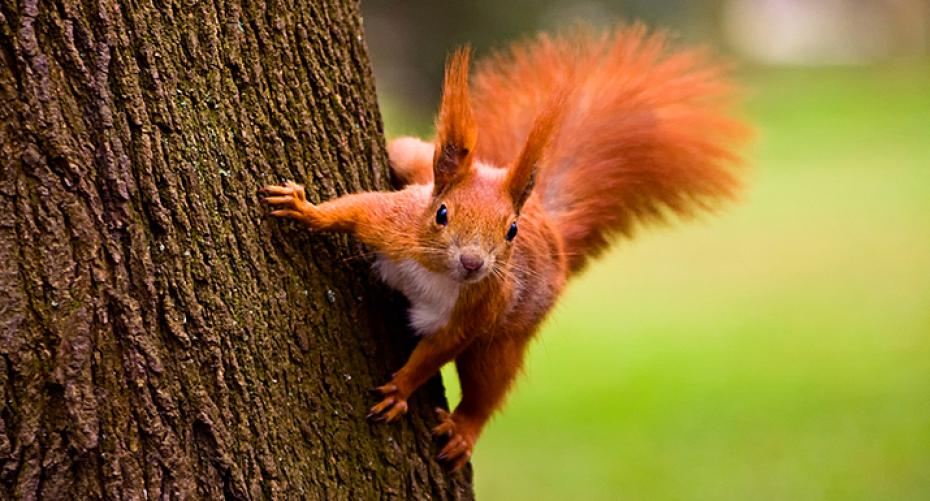Back garden biodiversity
British gardeners have always loved wildlife, but have tended to separate wildlife-friendly areas from the ‘proper' garden. It's true that closely-mown lawns and sanitised borders are proverbial deserts for many creatures; however letting standards slip a little doesn't mean sacrificing a beautiful garden for an overgrown wilderness.
Biodiversity brings an amazing richness into our back gardens, balancing out the ‘nasty's' with the very ‘nice'. If you already have a well-established garden, capitalise on its maturity by introducing nesting boxes into leafy glades, encouraging the ever-present birdlife to stay and become more visible. On the other hand, if planning a garden from scratch, why not make wildlife your priority? - Feeding stations, refreshing birdbaths, sheltering shrubs and protection from predators, all do much to entice nervous species to take up residence.
Children love involvement, and as the latest high-tech cameras can be fitted inside nesting boxes, they can watch first-hand as a brood of Blue Tits hatch - fuelling their enthusiasm and imagination with an amazing educational experience.


Bird tables and purpose-made ‘feeding stations' are always a delight, bustling with bird life during the colder winter months. If larger birds persist in taking the choicest seeds intended for smaller garden visitors, try using a protected feeder which not only deters squirrels but allows tiny birds to safely pop in and out, refuelling their reserves, while the bullyboys are prevented from gorging on all the luxuries.
Out of nesting season, having a warm place to roost is all-important for smaller bird species, desperate to conserve scant body fat on cold days and nights. Empty bird boxes hung around the garden, in sheltered corners or out of the way niches, can provide a sheltered stopgap, which, if favourably sited, may later offer a home to Gold Crest, Robin or Wren young by spring.
It's not just garden birds that appreciate a helping hand when it comes to finding the perfect abode. Bats are apt to change roosts as weather conditions and seasons change, so it's often wise to fix two or three bat boxes to a tree facing North, South and Southeast. When sited 2.5 to 5 metres off the ground, for attracting either low or high-flying bats, a double chambered bat box will provide home to many bats, as well as providing insulation from the elements and safe, predator-proof roosts.
 Small ground dwelling creatures such as toads, hedgehogs and woodland mammals definitely relish purpose made accommodation when left with scant natural alternatives and ladybirds, lacewings and solitary bees need over wintering habitats too. If you like to keep your garden tidy then there are a wide range of specially built bug houses that can be hung from trees or placed in sheltered areas of the garden.
Small ground dwelling creatures such as toads, hedgehogs and woodland mammals definitely relish purpose made accommodation when left with scant natural alternatives and ladybirds, lacewings and solitary bees need over wintering habitats too. If you like to keep your garden tidy then there are a wide range of specially built bug houses that can be hung from trees or placed in sheltered areas of the garden.
Don't forget that if you look after the beneficial wildlife in your garden then it will look after you and your garden in the future!




![Kingsbury-bench-05[1].jpg](http://www.hayesgardenworld.co.uk/cdn/shop/files/Kingsbury-bench-05_5B1_5D.jpg?v=1712162737&width=1500)
![Kingsbury-bench-01[1].jpg](http://www.hayesgardenworld.co.uk/cdn/shop/files/Kingsbury-bench-01_5B1_5D.jpg?v=1712161065&width=1500)
![tw17a-4947_0[1].jpg](http://www.hayesgardenworld.co.uk/cdn/shop/files/tw17a-4947_0_5B1_5D.jpg?v=1712161495&width=1500)
![tw17a-4947_tenbury_5ft[1].jpg](http://www.hayesgardenworld.co.uk/cdn/shop/files/tw17a-4947_tenbury_5ft_5B1_5D.jpg?v=1712161172&width=1500)
![tw17a-4952_tenbury_4ft[1].jpg](http://www.hayesgardenworld.co.uk/cdn/shop/files/tw17a-4952_tenbury_4ft_5B1_5D.jpg?v=1712161034&width=1500)
![thumbnail_IMG_1565-kik_2[1].jpg](http://www.hayesgardenworld.co.uk/cdn/shop/files/thumbnail_IMG_1565-kik_2_5B1_5D.jpg?v=1712226536&width=1500)
![thumbnail_IMG_1565-kik_1[3].jpg](http://www.hayesgardenworld.co.uk/cdn/shop/files/thumbnail_IMG_1565-kik_1_5B3_5D.jpg?v=1712159637&width=1500)



![WD-XgESA[1].jpeg](http://www.hayesgardenworld.co.uk/cdn/shop/files/WD-XgESA_5B1_5D.jpg?v=1712159609&width=1500)